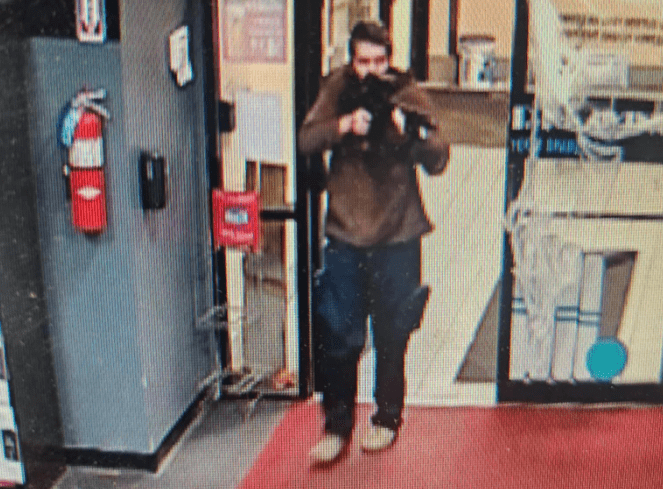An Ellsworth police officer was one of several law enforcement officials notified of the Lewiston mass shooting suspect’s threats of violence in the months before he killed 18 people and injured 13 more at a bar and bowling alley last Wednesday.
Ellsworth police chief Glenn Moshier told The Maine Monitor on Tuesday one of his officers served as shooting suspect Robert Card’s superior in the same military training unit.
The officer was notified of Card’s threats by other superiors in that unit on Sept. 15, which included a direct threat to the Ellsworth officer and the Saco military base where they served together.
Moshier said his department alerted Sagadahoc County law enforcement that same day and requested they complete a wellbeing check on Card.
His department also provided the sheriff’s office with contact information for the military officers who alerted them about Card, Moshier said.
“We conveyed to the Sagadahoc Sheriff’s Office what information had been passed on to our officer through the Saco National Guard training unit that he’s a part of, and then Sagadahoc took it from there,” Moshier said.
The Ellsworth officer was also involved in the process of hospitalizing Card this July at a military training in West Point, New York after Card displayed erratic behaviors and other mental health concerns, according to Moshier.
When that training ended and the officer returned to Ellsworth, he did not have any additional communications regarding Card until he received notification of the threats on Sept. 15, Moshier said.
Moshier declined to identify the officer, or his rank at the department and reserve unit, when asked by a reporter. He also said he did not know the specific details of the threats Card made to the base in Saco nor the Ellsworth officer who served with Card.
On Sept. 16, a day after his department passed word of Card’s threats to Sagadahoc, Moshier said they followed up with the Sagadahoc sheriff’s office and were told the sheriff’s office had not yet made contact with Card.
“It’s far outside of our jurisdiction to do anything more than that,” Moshier said.

The details provided by the Ellsworth police chief are among the emerging examples of the missed signs regarding Card’s mental state in the months leading up to the shootings in Lewiston.
The details track closely with a timeline released Monday by Sagadahoc County Sheriff Joel Merry, whose deputies were notified about Card’s mental state, his access to guns and his training as a marksman.
In a report about efforts to check on Card’s wellbeing, a Sagahodoc deputy wrote: “I would rather err on the side of caution with regards to Card since he is a capable marksman and, if he should set his mind to carry out the threats made to (a fellow reservist), he would be able to do it.”
Merry said in a statement his office was contacted by members of Card’s family on May 3. “The family said that Mr. Card’s mental health had started to decline in January. They were concerned for his well-being and said that Mr. Card had access to firearms,” Merry’s statement said.
According to the Washington Post, the May 3 incident report said Card’s ex-wife reported he had “recently picked up 10-15 handguns/rifles” from his brother’s house. It also said that Card’s adult son said it appeared his father had begun hearing voices in January.
Merry said in his statement a Sagadahoc deputy subsequently spoke to Card’s Army Reserve unit “and connected them with Mr. Card’s family, who assured our office that they would ensure that Card received medical attention.” The sergeant of the unit also said he would speak with Card, Merry said.
The reserve unit contacted the sheriff’s office again in September, asking to check on Card’s welfare.
According to the sheriff, Sagadahoc deputies visited Card’s residence in Bowdoin on Sept. 15 and Sept. 16. The sheriff’s office sent what is known as a “File 6” — an alert that they were attempting to locate Card — to other police agencies.
On the morning of Sept. 16, two deputies went to Card’s home, according to Merry’s account. His car was there. They repeatedly knocked on the door and did not get an answer. “The deputy said he might have heard someone moving around in the trailer,” but no one answered the door.
His deputy again contacted Card’s unit commander “who said that Mr. Card no longer had any weapons from the reserve unit.” The commander said they were trying to get treatment for Card, Merry said, and “that he thought it best to let Card have time to himself.”
The deputy also called Card’s brother on Sept. 17 and the brother said he’d attempt to secure any weapons Card had.
After the shooting, authorities said Card’s family was cooperative with their investigation as they attempted to locate him and piece together what had happened.







